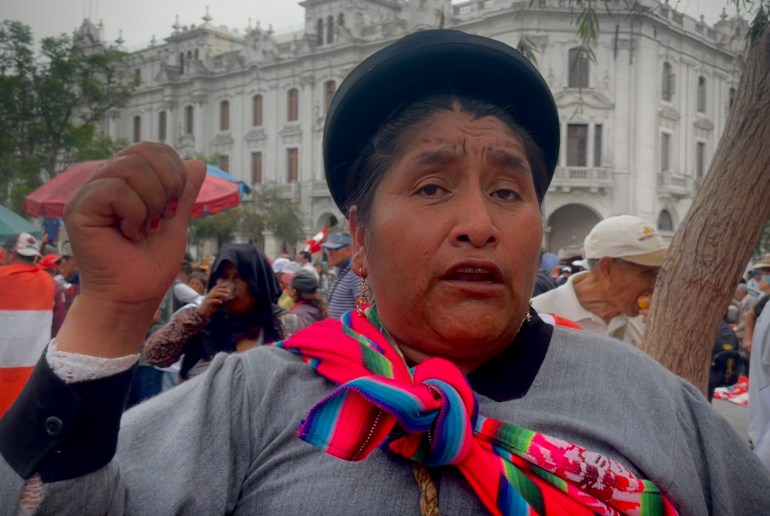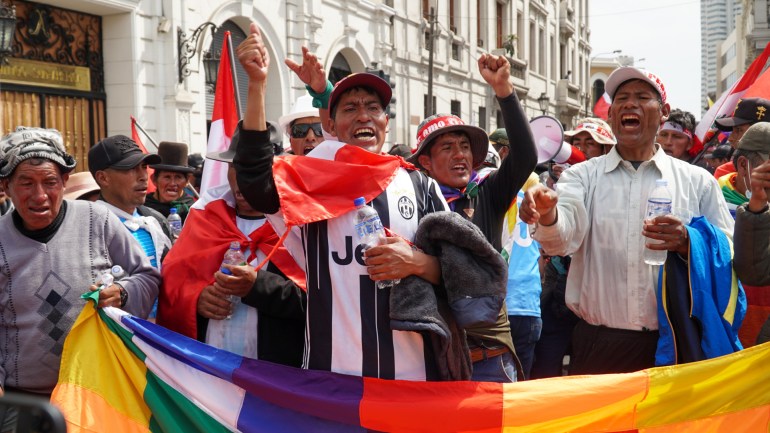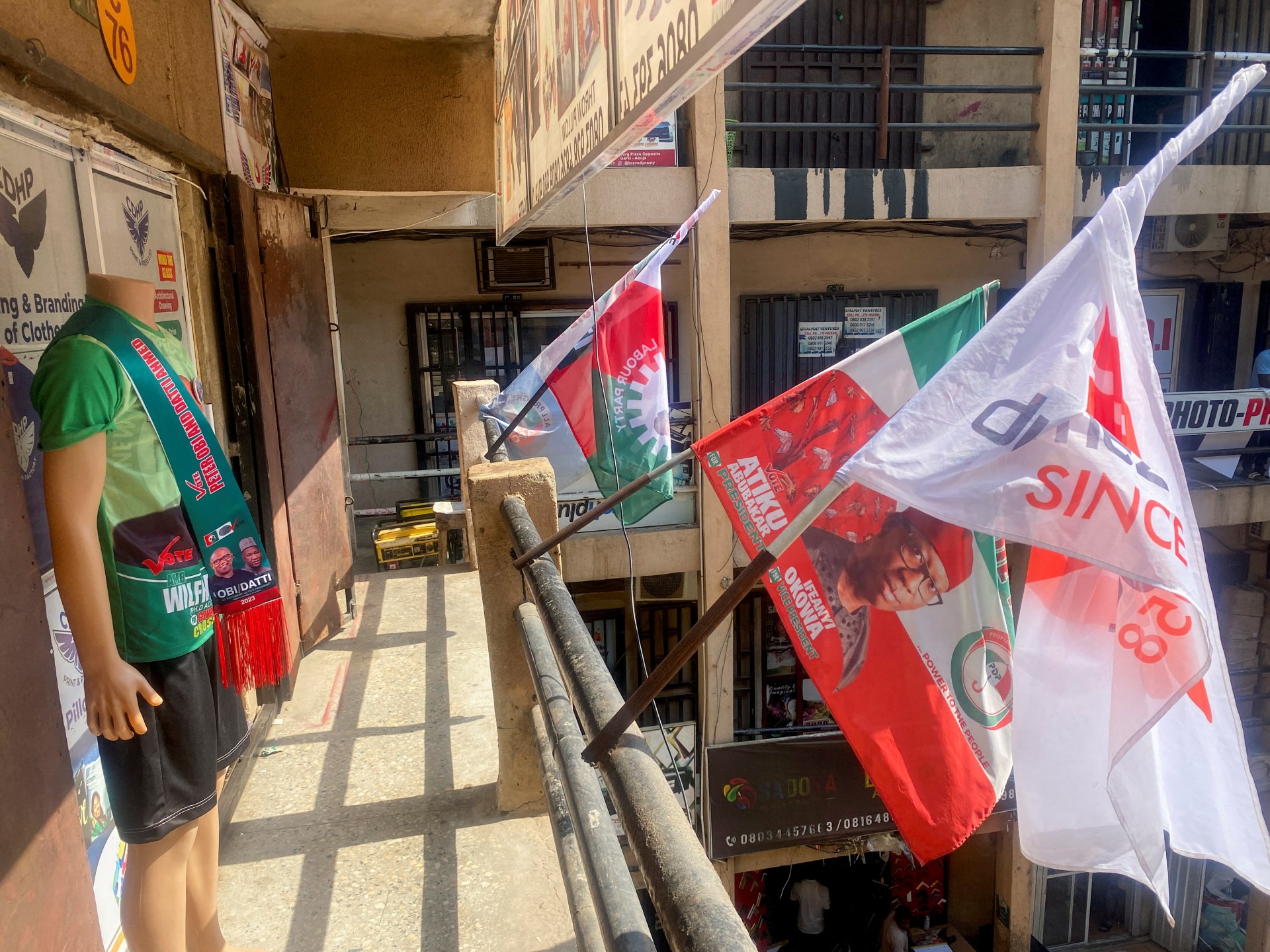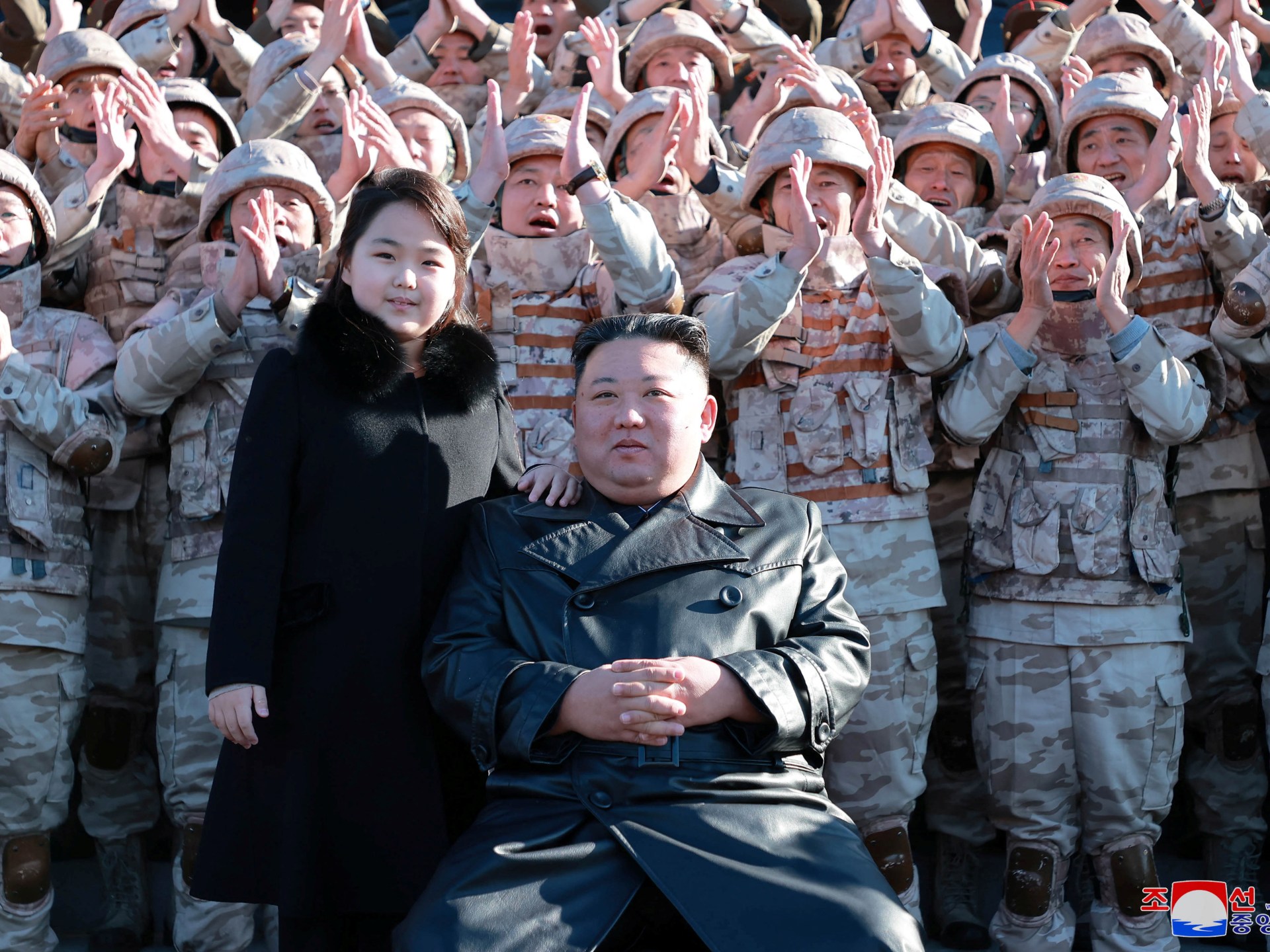As deadly protests continue, Peru’s government faces crisis
Lima, Peru — Dozens of civilians shot dead by armed forces. The gates of a premier public university stormed by a military tank. Police precincts set aflame.
Nearly seven weeks after Dina Boluarte ascended to Peru’s presidency in the wake of her predecessor Pedro Castillo’s chaotic removal, the protests that have roiled the country’s south have metastasised, spreading to the capital Lima where they have met fierce repression.
The demonstrators, many of whom are Castillo supporters, have called for Boluarte’s resignation, as well as for new elections and a revised constitution. An estimated 50 civilians have been killed since the protests began.
Now, the burning question on the minds of millions of Peruvians is: How does their nation overcome this deadly political impasse?
In a press conference on Tuesday, Boluarte called for a “national truce” in order to engage in “dialogue and set an agenda” for the country.
But she also used her speech to denounce the protesters for failing to organise “a social agenda” and for committing violence and destruction, including through the use of homemade guns.
“My country is living a violent situation, generated by a group of radicals with a political agenda,” she said.
Al Jazeera spoke to protesters, political analysts and workaday Peruvians about possible solutions to a crisis that has laid bare Peru’s deep-rooted social inequality — and has academics warning about a possible slide towards authoritarianism.

‘Peru is waking up’, protester says
Speaking through tears and with a voice raw from days of chanting in protests, Celia, a potato farmer from the Puno region, said the moment had passed for dialogue with the Boluarte government. She declined to give her last name for fear of police reprisal.
“After all the blood she’s spilled from my brothers, [Boluarte] must resign,” said Celia, who is Indigenous Aymara. She is one of many protesters from Peru’s provinces who have converged on central Lima to call for reform.
To get there, she had travelled a day’s journey, passing police checkpoints and blocked highways all the way from her native Ilave, a village along the Bolivian border that has been rocked by recent violence.
Amid the din of protesters in Lima’s streets, Celia decried a government that she says has spurned its Indigenous and peasant classes for too long.
“Peru is waking up,” she said. “We’ve been taken advantage of for too long. If it wasn’t for our hard work in the fields, Lima would starve.”
The demands of antigovernment protesters like Celia once centred around the liberation of former President Castillo, who is being held in pre-trial detention as he is investigated on charges of rebellion. But now, protesters are increasingly focused on unseating Boluarte, as well as calling for new elections and a redrafting of the country’s 1993 dictatorship-era constitution.
Rising tensions ‘going to explode’
Analysts note that, as Castillo’s former vice president, Boluarte’s succession to the presidency is constitutionally legitimate. She was sworn in on the same day Castillo was impeached and removed from office, on December 7.
But her deployment of military forces against protesters, combined with a refusal to acknowledge the legitimacy of their demands and a broad-brushed portrayal of them as far-left agitators, have hobbled her ability to build consensus.
“She and her government have treated [protesters] with such violence and repression that it’s undermining her government’s legitimacy,” said Jo-Marie Burt, a senior fellow at the Washington Office on Latin America, a nonprofit organisation.
“If she continues ruling with her back to the people and using repression to keep protesters at bay, that could last for a while, but at some point it’s going to explode.”
In an attempt to defuse protests in Lima last week, the Boluarte government enforced a state of emergency across seven regions, including the capital, that has impeded basic civil liberties, including the right to assembly.
On Saturday, an antiterrorism squadron used an armoured vehicle to ram the gates of San Marcos University in order to evict nearly 200 rural protesters housed inside. It was a show of force that drew analogies to the repressive tactics of disgraced ex-President Alberto Fujimori, who ordered a similar raid on the university in 1991.

Narrative counterbalance ‘is in the streets’
Analysts warn that, as the Boluarte government resorts to tactics like these, the door to dialogue with peaceful protesters is closing.
“The government has left behind the possibility of a political solution and is instead looking for an authoritarian solution, one that relies on what we call mano dura [iron-fisted] politics,” said Paolo Sosa Villagarcia, a political scientist with the Institute of Peruvian Studies.
Sosa Villagarcia noted that, rather than seek broad intercultural dialogue, Boluarte has instead chosen to criminalise the protests and forge a governing coalition with her former far-right enemies in Congress, as well as the police and armed forces.
The political scientist also warned that, with the national press largely broadcasting a law-and-order mantra and limited investigations into state violence, there is little to contradict the government’s narrative of events.
“The only counterbalance right now to her government is in the streets, and they’re being highly repressed,” said Sosa Villagarcia. “I am afraid at some point the government is going to succeed in containing protesters. After that, she is free to do what she wants.”
A poll this month shows Boluarte’s disapproval rating at 71 percent. With the death toll likely to rise amid the unrest, a majority of Peruvians see new elections as the best path forward.
Facing public pressure, Peru’s sorely divided Congress is set to hold a referendum next month to ratify elections for 2024, which would require changes to the constitution.
Far-right factions in Congress have already set conditions for their votes, hoping to secure guarantees that the government will remove independent electoral authorities. That worries observers like Jo-Marie Burt, who sees elections not as a panacea but as the least-fraught path out of a widening crisis.
“I don’t see another path forward that doesn’t mean more repression, possible loss of life or extreme instability, impasse and paralysis,” she said.




